The Construction Engineering Management (CEM) program greeted a total of 62 new students during the August 21st and August 22nd Boot Camp. Due to the COVID-19 pandemic, CEM held a virtual-online graduate student orientation.
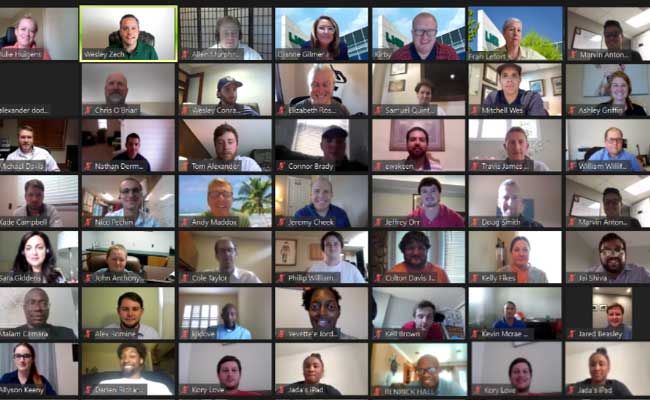 Since an inclement winter weather event in 2017, the fall 2020 term marks only the second time ever where students could not safely travel to the UAB campus for the scheduled two-day event. Students usually attend in an on-campus setting to physically meet the CEM faculty, staff, and their classmates. The Boot Camp event marks the official start of a track of study in which students will take courses online over the next 19 months to earn a Masters of Engineering (MEng) degree with a concentration in CEM through the Department of Civil, Construction, and Environmental Engineering (CCEE).
Since an inclement winter weather event in 2017, the fall 2020 term marks only the second time ever where students could not safely travel to the UAB campus for the scheduled two-day event. Students usually attend in an on-campus setting to physically meet the CEM faculty, staff, and their classmates. The Boot Camp event marks the official start of a track of study in which students will take courses online over the next 19 months to earn a Masters of Engineering (MEng) degree with a concentration in CEM through the Department of Civil, Construction, and Environmental Engineering (CCEE).
The incoming cohort of students who attended the fall 2020 event are pictured above. This is the 25th Boot Camp hosted by CEM since its inception as an online program in 2009. Since then, CEM has continued to excel with over 607 alumni, and has received national recognition by US News and World Report for excellence in online engineering education. This year, the University of Alabama at Birmingham’s School of Engineering was ranked No. 1 in the nation for its online construction engineering management track in the Master of Engineering Program, according to the 2020 Online College Rankings Consensus. In previous years, the degree program ranked in the top ten by Online Masters for one of the best online master’s in construction management, and also recognized by the Affordable Colleges Online for affordability in online engineering education.
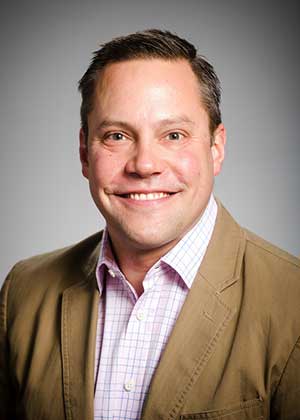 Dr. Wesley ZechDuring the morning kickoff, Dr. Wesley Zech, CEM Director, and Ms. Dianne Gilmer, Director of CEM Student Affairs, made kind introductions, congratulated the new students on being accepted into the program, and commended for their effort to attend the virtual orientation. Dr. Zech says “Traditionally, Boot Camp serves as a time for students to visit campus, engage with the CEM faculty, and meet other students. However, due to COVID-19, we had to shift gears and host Boot Camp virtually through Zoom, which resulted in a very successful event. The students that attended were engaged and did an exceptional job with the technology. They provided us with individual introductions via their icebreakers and made the event personable. Overall, the event was a success and we all left with a sense of personal connection.
Dr. Wesley ZechDuring the morning kickoff, Dr. Wesley Zech, CEM Director, and Ms. Dianne Gilmer, Director of CEM Student Affairs, made kind introductions, congratulated the new students on being accepted into the program, and commended for their effort to attend the virtual orientation. Dr. Zech says “Traditionally, Boot Camp serves as a time for students to visit campus, engage with the CEM faculty, and meet other students. However, due to COVID-19, we had to shift gears and host Boot Camp virtually through Zoom, which resulted in a very successful event. The students that attended were engaged and did an exceptional job with the technology. They provided us with individual introductions via their icebreakers and made the event personable. Overall, the event was a success and we all left with a sense of personal connection.
Dr. Zech then briefly introduced the CEM faculty, staff, and others that would present later during the two-day gathering.
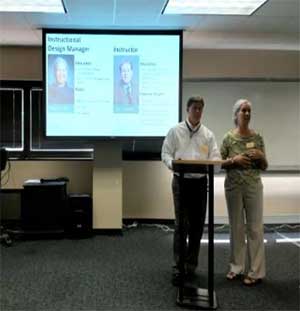 Ms. Fran Lefort and Mr. Allen MurphreeAfterwards, Ms. Fran Lefort and Mr. Allen Murphree provided training regarding the CEM online technology of assignment submission, Canvas LMS navigation, weekly course content, and Zoom live class sessions. Murphree also discussed the importance of proper computer organization, minimum computer system requirements, computer updates and maintenance, and installing educational software. Lefort discussed the online examination proctoring procedures and conducted a virtual demonstration of the CEM computer technology. This exercise allowed students to see examples of a homework assignment, a sample exam, how to enter a live weekly class session, and how to watch an archived class recording.
Ms. Fran Lefort and Mr. Allen MurphreeAfterwards, Ms. Fran Lefort and Mr. Allen Murphree provided training regarding the CEM online technology of assignment submission, Canvas LMS navigation, weekly course content, and Zoom live class sessions. Murphree also discussed the importance of proper computer organization, minimum computer system requirements, computer updates and maintenance, and installing educational software. Lefort discussed the online examination proctoring procedures and conducted a virtual demonstration of the CEM computer technology. This exercise allowed students to see examples of a homework assignment, a sample exam, how to enter a live weekly class session, and how to watch an archived class recording.
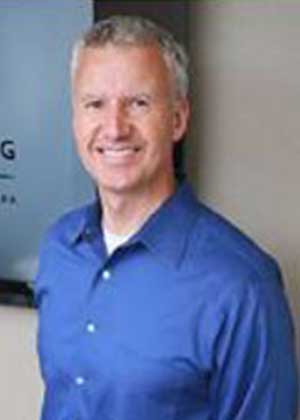 Pat OmaraLater that morning, students received public speaking training from professional speaker and author Mr. Pat O’Mara. O’Mara covered “The Top Ten Ways to Present like a Pro”, which addresses things like presentation content, posture, tone and inflection, nervous jitters, time management, using visual aids, and knowing your audience. The training prepares graduates for their live “Icebreaker” presentations given on day two, which is one of many public speeches required during the CEM curriculum.
Pat OmaraLater that morning, students received public speaking training from professional speaker and author Mr. Pat O’Mara. O’Mara covered “The Top Ten Ways to Present like a Pro”, which addresses things like presentation content, posture, tone and inflection, nervous jitters, time management, using visual aids, and knowing your audience. The training prepares graduates for their live “Icebreaker” presentations given on day two, which is one of many public speeches required during the CEM curriculum.
O’Mara’s presentation completed the morning session and students were dismissed for lunch. If Boot Camp could have been on-campus, the students, CEM faculty and staff would usually share a delicious meal together and then complete a short campus tour.
 Dr. Jeffrey Holmes, M.D.During the start of the afternoon session, Dr. Jeffrey Holmes, M.D., the Dean of the School of Engineering, welcomed the cohort saying “I want to congratulate everyone on the start of the program. I hope that people have bragged about this program to you. CEM has been fantastic for the School of Engineering and received a number one ranking this year as the best online master’s in construction management. In March, when everyone was forced into remote instruction, it was this team that were the experienced professionals that helped other faculty convert their classes. We appreciate them for what they do, and you will too. I look forward to seeing what each one of you will accomplish at UAB and beyond.” Holmes is new to UAB, officially beginning in his role as the Dean on July 1st, 2020, and was previously part of the University of Virginia.
Dr. Jeffrey Holmes, M.D.During the start of the afternoon session, Dr. Jeffrey Holmes, M.D., the Dean of the School of Engineering, welcomed the cohort saying “I want to congratulate everyone on the start of the program. I hope that people have bragged about this program to you. CEM has been fantastic for the School of Engineering and received a number one ranking this year as the best online master’s in construction management. In March, when everyone was forced into remote instruction, it was this team that were the experienced professionals that helped other faculty convert their classes. We appreciate them for what they do, and you will too. I look forward to seeing what each one of you will accomplish at UAB and beyond.” Holmes is new to UAB, officially beginning in his role as the Dean on July 1st, 2020, and was previously part of the University of Virginia.
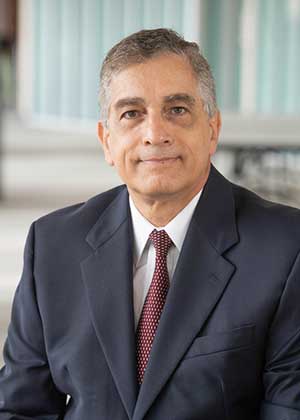 Dr. Fouad Fouad, P.E.Dr. Fouad Fouad, P.E., the Chair of the CCEE Department, greeted the students saying “You are part of a great CEM program with a very talented team. Construction is the largest field in the world. It employs millions of people and produces trillions of dollars for the U.S. economy, so you should be proud to be part of this growing industry. Even with the outbreak of COVID-19, the construction industry remains strong and continues to hire. It is very rewarding to be part of a construction project because everyone can immediately see the progress, the work is new and different every day, and it provides a benefit to the public.” Fouad also told students “Our CEM curriculum is a broad-based graduate degree program that offers excellent knowledge in project management, legal, construction methods, and technology like BIM, drones, and virtual reality. The CEM program will prepare you for the challenges of the job. Best wishes.”
Dr. Fouad Fouad, P.E.Dr. Fouad Fouad, P.E., the Chair of the CCEE Department, greeted the students saying “You are part of a great CEM program with a very talented team. Construction is the largest field in the world. It employs millions of people and produces trillions of dollars for the U.S. economy, so you should be proud to be part of this growing industry. Even with the outbreak of COVID-19, the construction industry remains strong and continues to hire. It is very rewarding to be part of a construction project because everyone can immediately see the progress, the work is new and different every day, and it provides a benefit to the public.” Fouad also told students “Our CEM curriculum is a broad-based graduate degree program that offers excellent knowledge in project management, legal, construction methods, and technology like BIM, drones, and virtual reality. The CEM program will prepare you for the challenges of the job. Best wishes.”
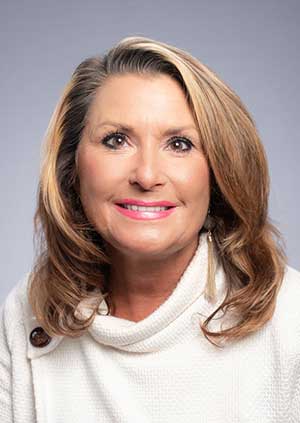 Dianne GilmerAfterwards, Ms. Dianne Gilmer talked about the overall CEM Experience. The diverse group of students in this fully online program learned what they can expect from the CEM degree program, what CEM expects from each graduate student, UAB policies and the Academic Honor Code, the CEM student attrition rate, time management skills, and other helpful guidance to promote student success.
Dianne GilmerAfterwards, Ms. Dianne Gilmer talked about the overall CEM Experience. The diverse group of students in this fully online program learned what they can expect from the CEM degree program, what CEM expects from each graduate student, UAB policies and the Academic Honor Code, the CEM student attrition rate, time management skills, and other helpful guidance to promote student success.
According to Gilmer, “Each new cohort has its own personality and unique characteristics. The diverse education and experience backgrounds of the students always amazes us. The students enjoy learning about other career opportunities offered in the construction industry that they were not aware of prior to coming to UAB. CEM’s global presence, allows our students and alumni access to a vast network of other working professionals.”
Students were asked by Zech what they expect to get out of Boot Camp. The polling software used captured the student’s anonymous responses from their devices and a few are shown below:
- “Overview of Program”
- “Tips for success”
- “Preparedness”
- “Knowledge”
- “Student expectations”
Zech then began discussing the subject matter for Advanced Project Management, one of the first courses taken by the new graduate students. He covered the course objectives like managing project scope, cost, time and resource, elements of managerial leadership, risks, safety, and ethics.
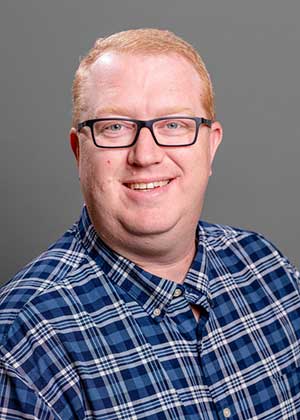 Dr. Jason KirbyClosing out day one, Dr. Jason Kirby began reviewing course content for the sustainability and green building practices course. Kirby defined the fundamental nature of sustainability and what qualifies as a green building material. By conducting a hands-on exercise about houses, he helped students understand the importance of Leadership in Energy and Environmental Design (LEED) principles and development as it relates to building size and scale, solar orientation, materials and color selection, and other energy saving technology.
Dr. Jason KirbyClosing out day one, Dr. Jason Kirby began reviewing course content for the sustainability and green building practices course. Kirby defined the fundamental nature of sustainability and what qualifies as a green building material. By conducting a hands-on exercise about houses, he helped students understand the importance of Leadership in Energy and Environmental Design (LEED) principles and development as it relates to building size and scale, solar orientation, materials and color selection, and other energy saving technology.
Kirby also talked about the design priority differences between an architect and an engineer, where one was concerned about function and aesthetics, and the other focusing on whether the structure would be strong and not fail.
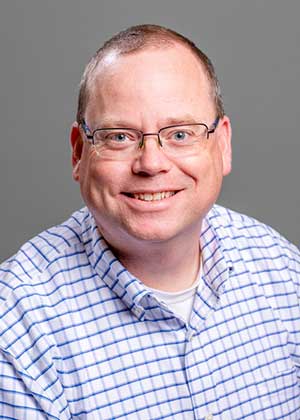 Dr. Chris WaldronOn day two of orientation, after the students finished presenting their “Icebreaker” introductions, Dr. Chris Waldron began discussing the course material for the Construction Methods and Equipment class. This is the second class required for new students during their first term. Waldron began by showing some pictures of various bridges that he designed when working in industry.
Dr. Chris WaldronOn day two of orientation, after the students finished presenting their “Icebreaker” introductions, Dr. Chris Waldron began discussing the course material for the Construction Methods and Equipment class. This is the second class required for new students during their first term. Waldron began by showing some pictures of various bridges that he designed when working in industry.
Waldron later covered the class objectives, which included project delivery methods, the reason for building codes, loads on buildings, foundation elements, thermal material properties, wood, steel, concrete, masonry, and external cladding.
Overall, the virtual-online Boot Camp was a successful event and well received by everyone. At the end of the day, students were asked by Zech what they liked most about attending orientation. The polling software used captured the student’s anonymous responses from their devices and a few are shown below:
- “Learning about good presentation techniques and networking with my fellow classmates.”
- “Details on class, tests, homework, faculty and staff.”
- “The experience of meeting everyone and giving us an idea of what was to come and what was expected.”
- “I enjoyed meeting classmates and instructors. I enjoyed hearing everyone’s stories and details regarding their individual backgrounds and life experiences.”
- “Getting to know classmates and instructors.”
- “The direction that was given to navigate the systems like Canvas, Proctor U, etc.”
- “A great introduction for the requirements of the program”
- Boot Camp reinforced my decision to enroll in the CEM program.”
According to Gilmer, “One of the most beneficial aspect of Boot Camp is creating an engaged learning community and network for the new students. The fall 2020 cohort is comprised of many different educational and work history backgrounds. It is amazing to see how these differences create a very collaborative and innovative culture in which students can grow both professionally and personally. The CEM Faculty are very sensitive to the fact that the students are working professionals and make themselves available during evenings and on weekends. We strive to deliver relevant, real world material that will aid the cohort in achieving their educational goals and to make them more marketable in a global economy.”